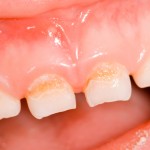
Caries is one of the commonest diseases in children. Premature birth, defined as childbirth before 37 weeks of gestational age can affect enamel formation resulting in enamel defects which may increase caries susceptibility. Low birth weight (< 2500g) may also be associated with enamel defects.
The aim of this review was to evaluate the prevalence of dental caries in preschool children born preterm and/or with a low birth weight compared to children born full term and/or with a normal birth weight.
Methods
Searches were conducted in the Medline/PubMed, Cochrane Library, Web of Science, Scopus, Lilacs, the Brazilian Library of Dentistry (BBO) Clinical Trials, the UK National Institute for Health and Care Excellence, and the US National Institutes of Health. Cross-sectional, case-control, or cohort studies evaluating the association between dental caries in the primary dentition and gestational age and/or birth were considered. Two reviewers independently selected studies extracted data and assessed risk of bias using a checklist proposed by Fowkes and Fulton. The primary outcome was dental caries. A random-effects meta-analysis was run to pool the crude prevalence of dental caries according to gestational age and birth weight. Certainty of evidence was assessed using the Grading of Recommendations, Assessment, Development, and Evaluation (GRADE) approach.
Results
- 59 studies (36 cross-sectional, 4 case-control and 19 cohort studies) involving a total of 115,170 children were included.
- The studies were published between 1996 and 2018.
- 96.6% of the studies were published in English with 42% being conducted in Asia.
- A majority of studies (28 out of 36) reported that dental caries was not associated with gestational age.
- 55 studies contributed data to the meta-analysis and the crude caries prevalence rates are shown in the table.
| Caries Prevalence
(95%CI) |
|
| Preterm children | 39% (30 – 48%) |
| Full-term children | 30% (20 – 39%) |
| Low birth weight children | 40% (33 – 47%) |
| Normal birth weight children | 33% (26 – 41%) |
- The overall certainty of the evidence was rated as very low.
Conclusions
The authors concluded: –
the occurrence of dental caries was similar between children born prematurely and those born full term as well as between children with low birth weight and normal birth weight with very low certainty of evidence. Further prospective studies should be conducted to evaluate differences in the prevalence of dental caries prevalence according to age group and considering birth weight and gestational age.
Comments
A wide range of databases was searched for this review with no restriction on language or date. Although a majority of the studies are published in within the past 20 years the quality is limited and there is significant heterogeneity in the studies and the risk of bias assessment suggests that two thirds of the included did not address key confounding issues and almost 80% having quality control issues. While the review suggests that preterm and low birth weight children have similar caries prevalence to children born at full term and of normal weight the available evidence is of very low certainty. This means that new well conducted studies could change the direction of these findings.
Links
Primary Paper
Occhi-Alexandre IGP, Cruz PV, Bendo CB, Paiva SM, Pordeus IA, Martins CC. Prevalence of dental caries in preschool children born preterm and/or with low birth weight: A systematic review with meta-analysis of prevalence data [published online ahead of print, 2019 Dec 19]. Int J Paediatr Dent. 2019;10.1111/ipd.12610. doi:10.1111/ipd.12610
Other references
Fowkes FGR, Fulton PM. Critical appraisal of published research: introductory guidelines. BMJ. 1991;302:1136-1140.
